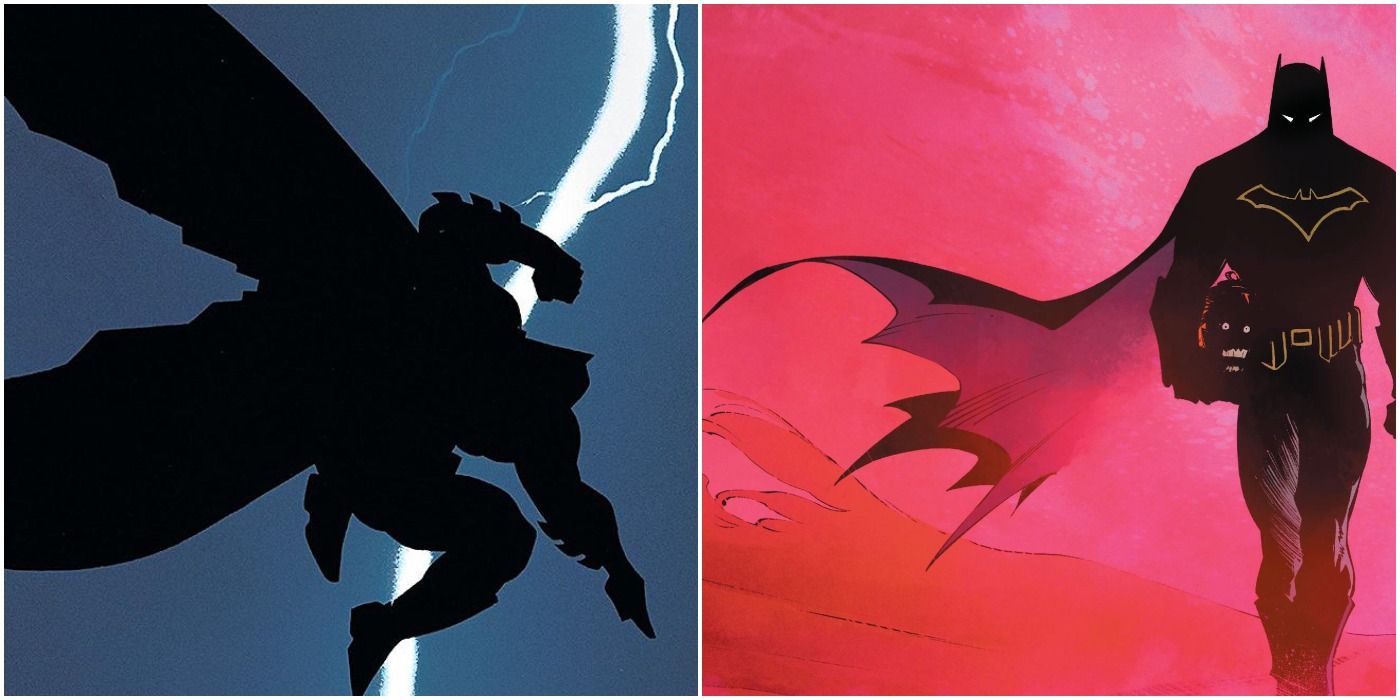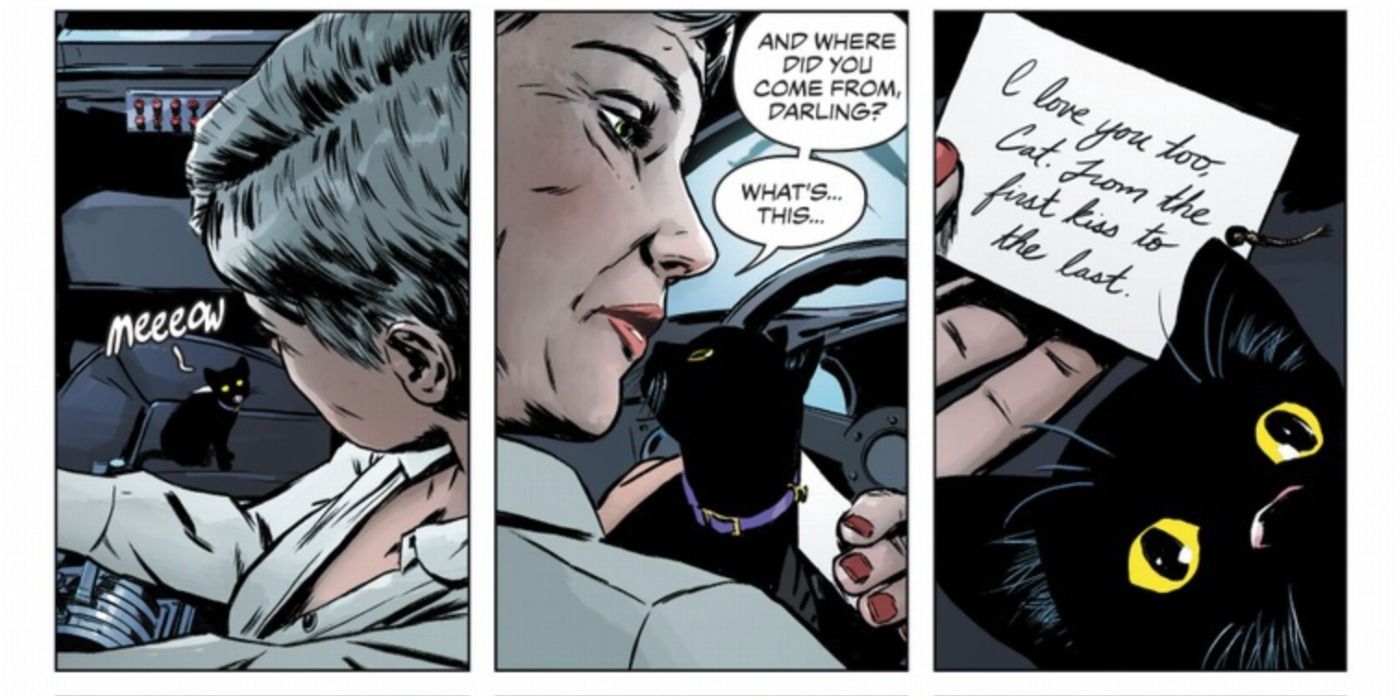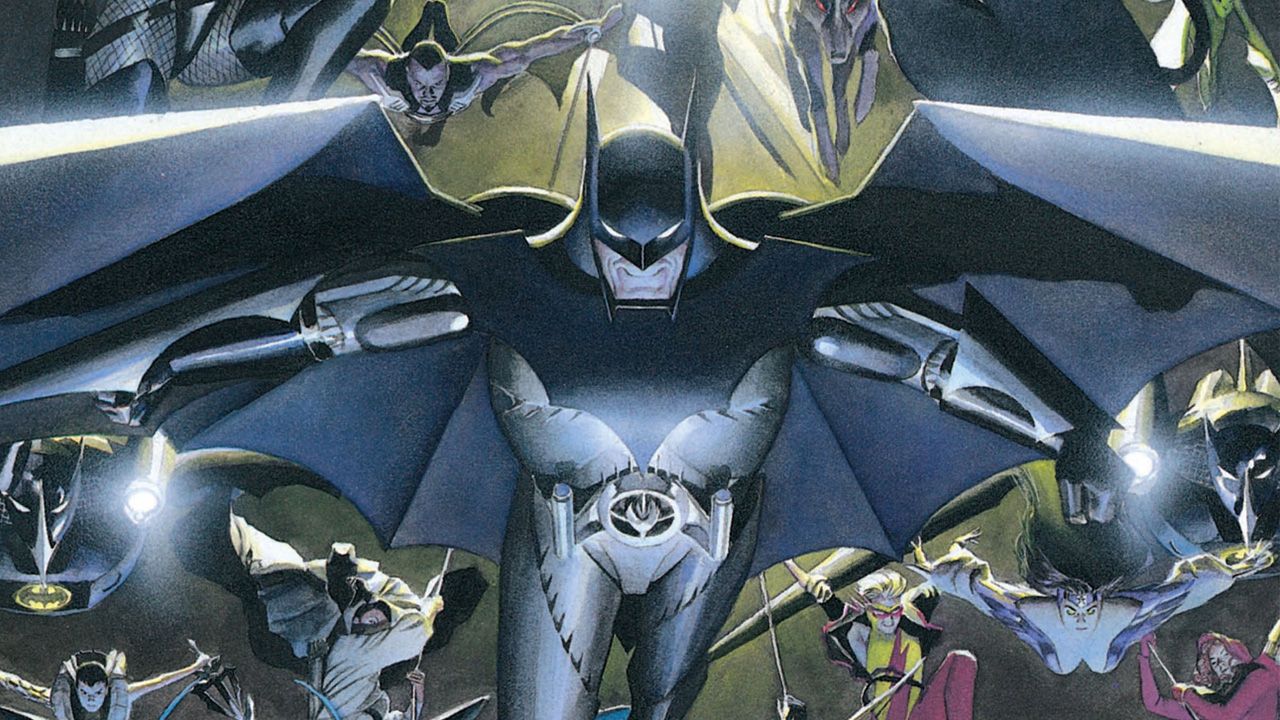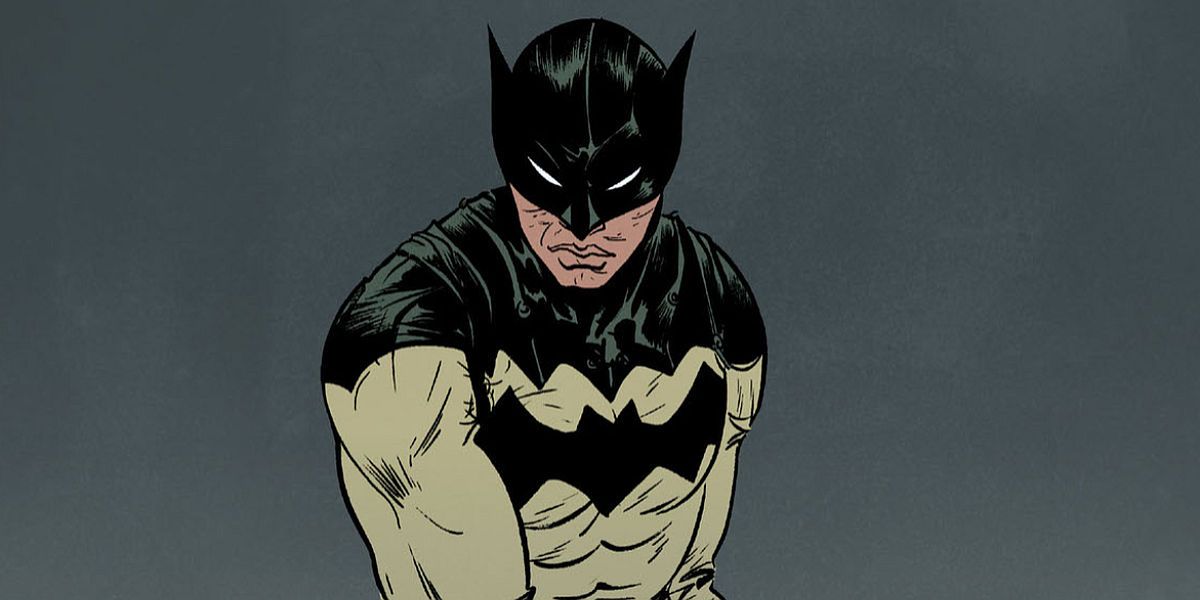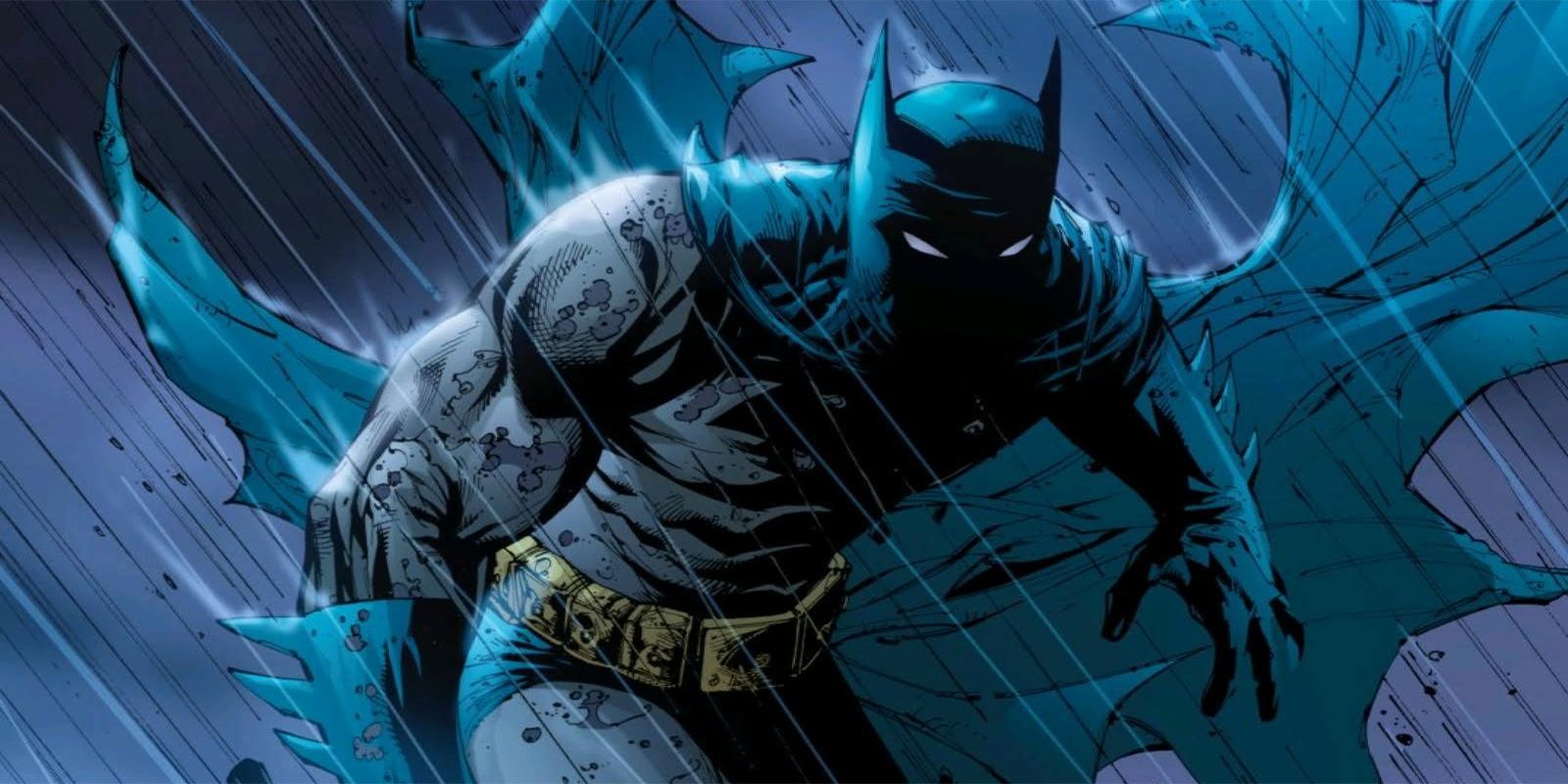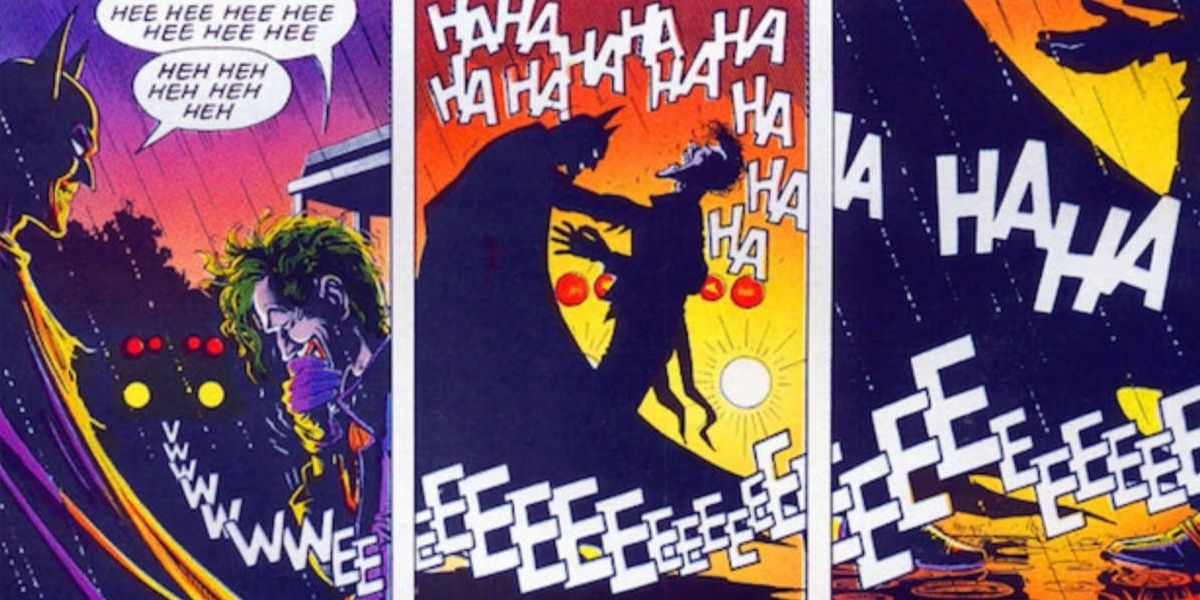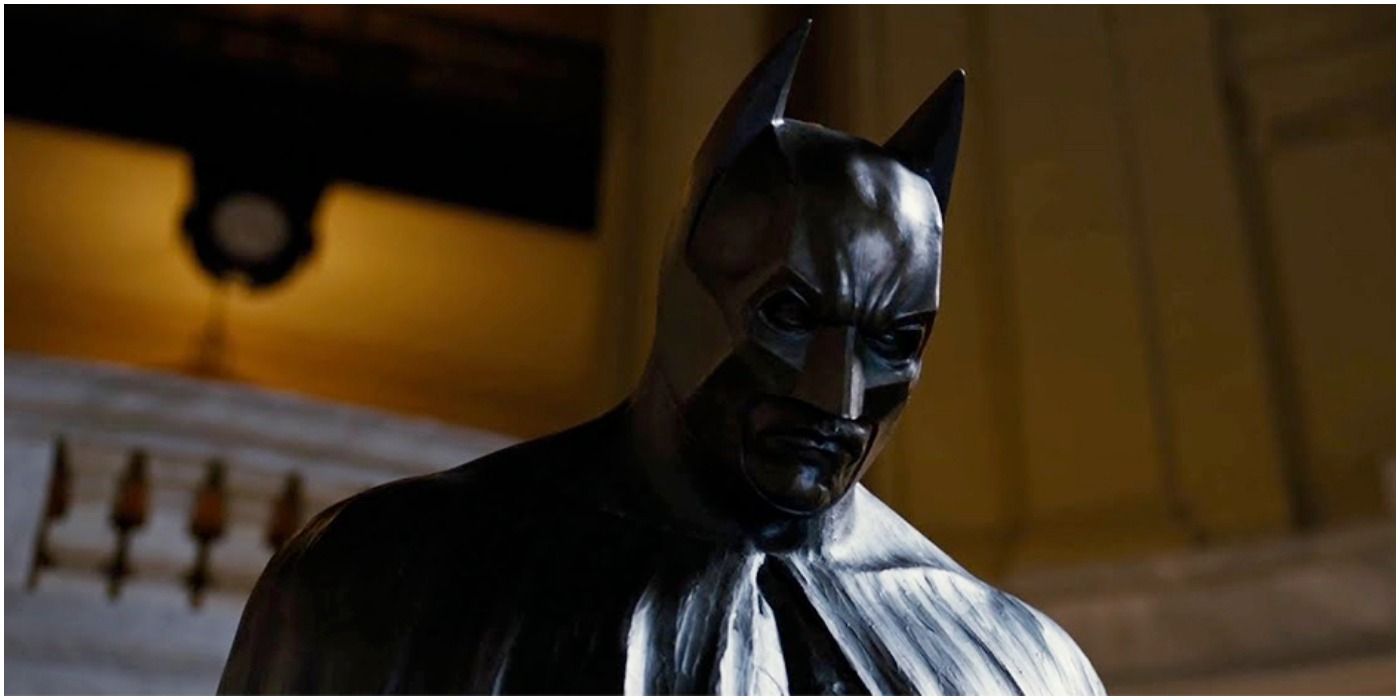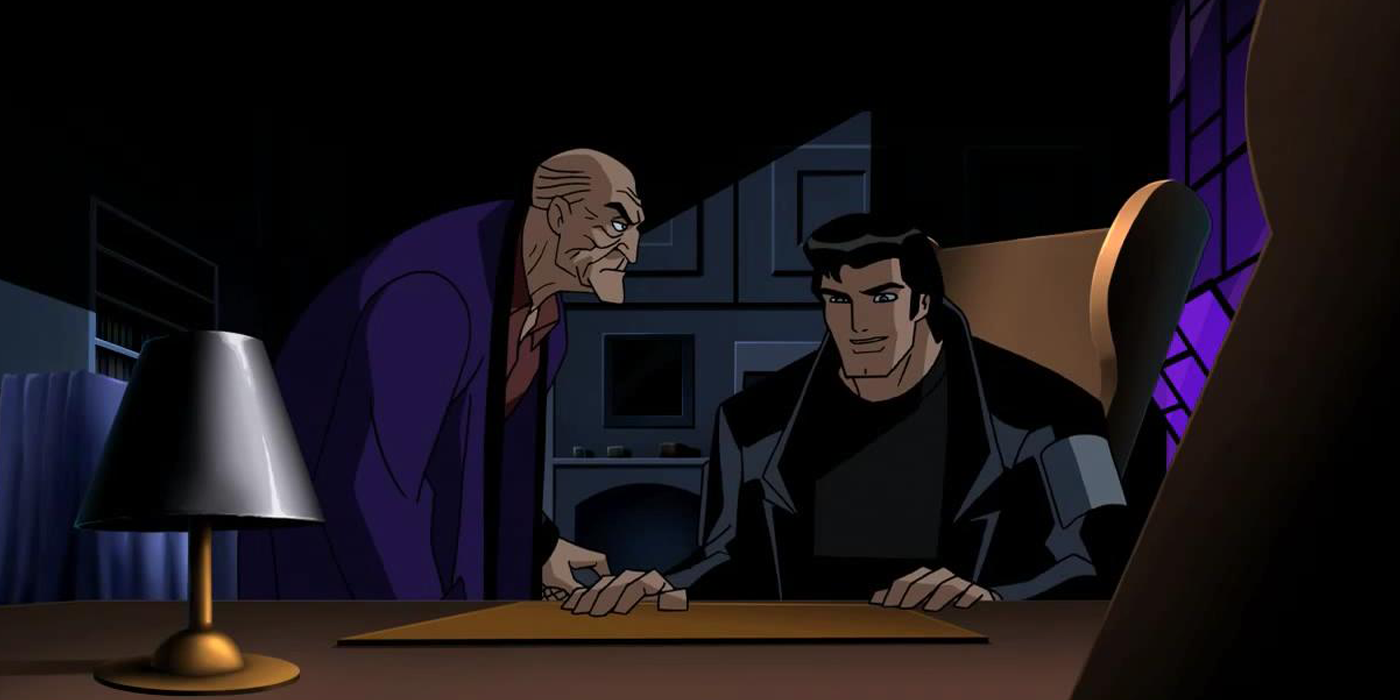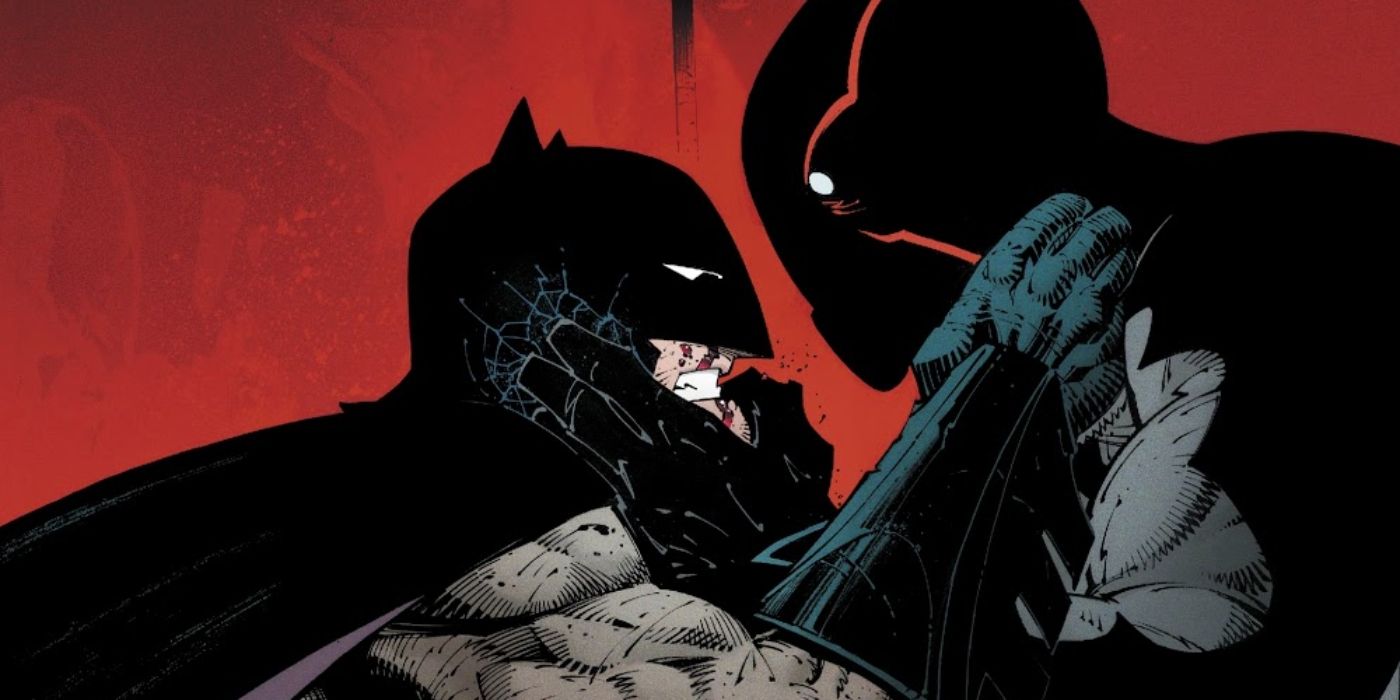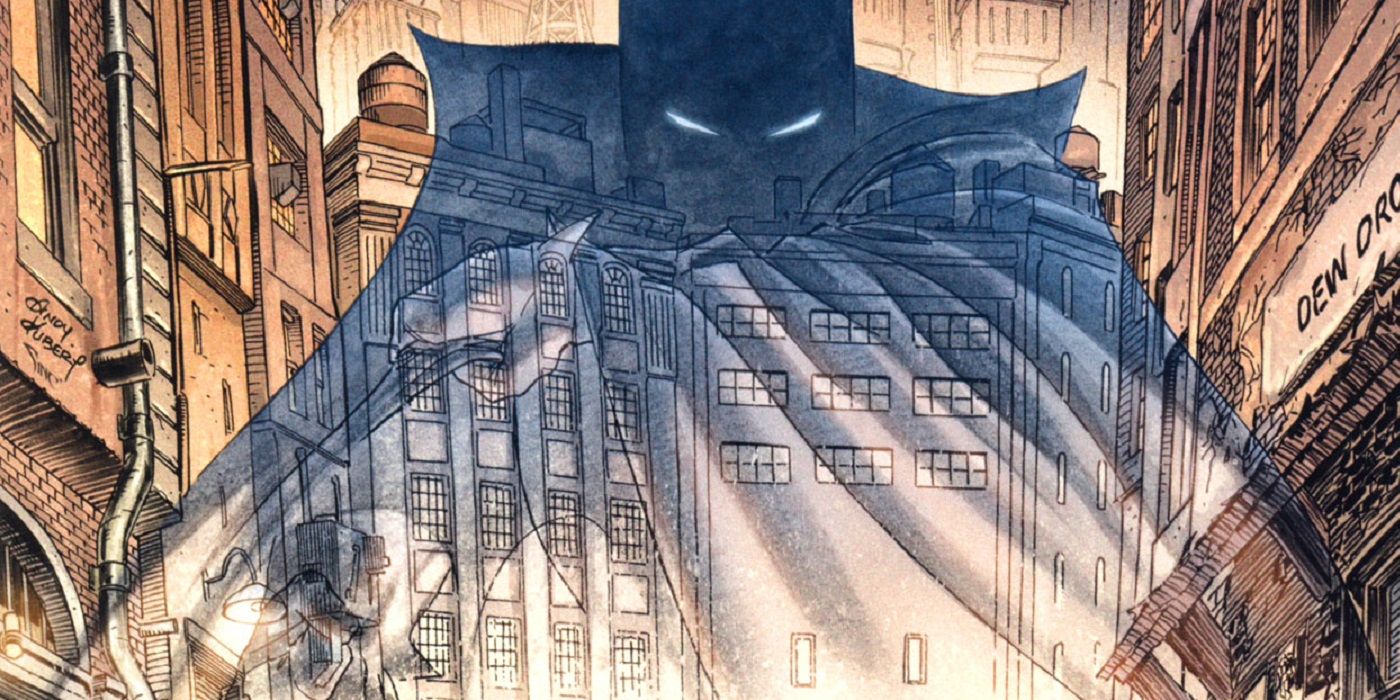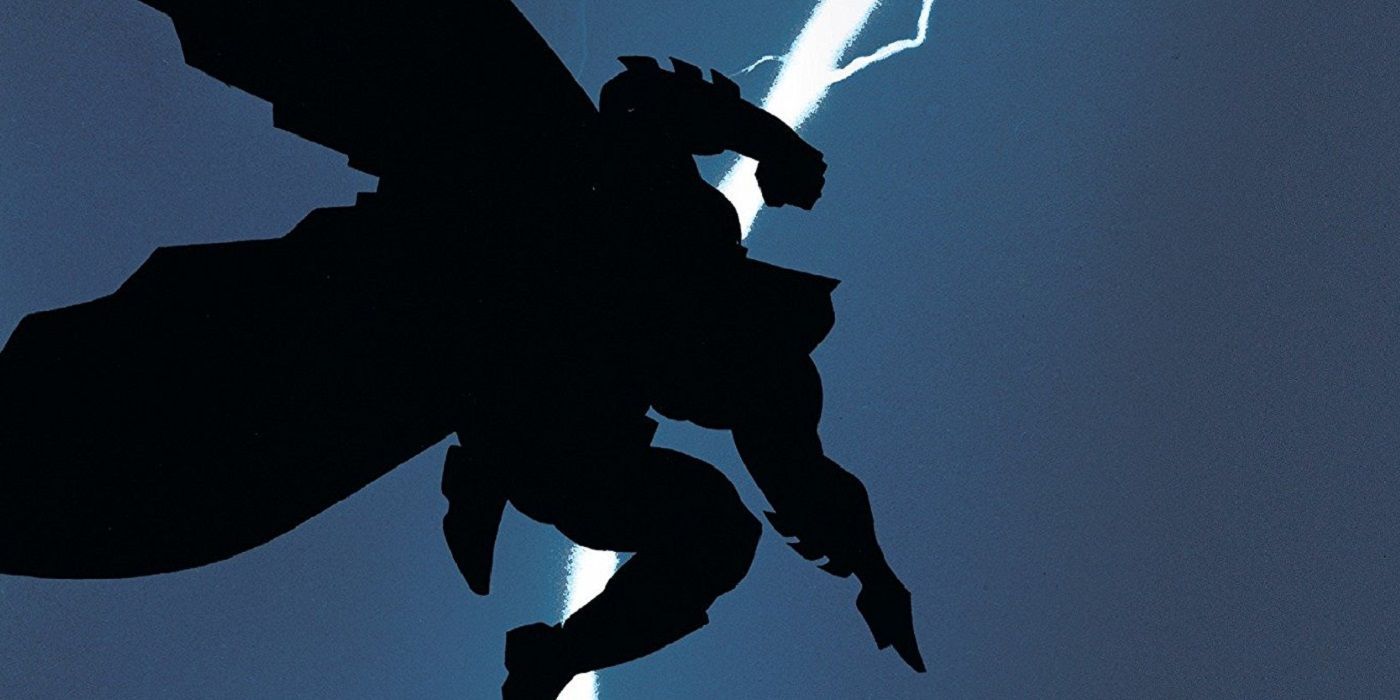In his essay Mark of the Batman, Alan Moore wrote that "all of our best and oldest legends recognize that time passes and that people grow old and die." And yet, superheroes almost never end, a consequence of their corporate ownership that demands perpetual serialization. It means that despite being decades old, superheroes like Batman remain youthful and unchanging.
As such, they can't quite fulfill the promise of being "modern mythology" as they often claimed to be. Some Batman writers, however, have attempted to provide the conclusion Moore prescribes. Here are ten Batman stories that might have concluded the myth once and for all if DC execs allowed, giving Batman a well-deserved rest.
10 "One Of These Days"
Sandwiched in Tom King's Batman run is this one-shot that flashes forward to Bruce Wayne's final days. In the future the story portrays, Bruce has finally settled down with Selina Kyle and is about to meet his end, not because of battle with super-villains, but because of a terminal illness. The issue portrays the reality, upsides and down, that "growing old together" entails, giving Bruce and Selina the ending mainstream, serialized comics can't give them. It also has simultaneously the happiest yet most somber death Batman's ever had; he dies in bed, surrounded by the "family" he forged through crime-fighting.
9 "Kingdom Come"
"Kingdom Come" serves as a potential finale to the DC universe as a whole, but the most touching, complete endings are reserved for Batman and his two compatriots in the DC Trinity. Confined to an exo-skeleton after age and decades of injuries have taken their toll, Batman creates a new Outsiders team to oppose both the increasingly-authoritarian Justice League led by Superman & Wonder Woman, as well as Lex Luthor's "Mankind Liberation Front." Age has hardened Bruce; he spends much of the story believing metahumans may have to be eradicated to ensure peace. By the end though, he has recanted and converted Wayne Manor into a hospital, following in the footsteps of his doctor father Thomas.
8 "Batman: Year 100"
Set in 2039 (100 years after Batman's first appearance in Detective Comics #27), "Year 100" follows a Batman who may or may not be Bruce Wayne in a dystopian future where privacy is a thing of the past. Working in the shadows of the police state Gotham has become, alongside two young allies "Robin" & "Oracle," Batman is brought out of urban legend status while investigating the death of a federal agent. Instantly memorable for its stylized artwork (pencilled by series writer Paul Pope and colored by José Villarrubia), "Year 100" seems more ageless with every passing year. Its social commentary remains relevant 14 years on from publication, and the book affirms the immortality of Batman.
7 "Batman: RIP"
"Batman & Robin will never die!" proclaims the Caped Crusader himself in the opening of "Batman: R.I.P." The story, a second act chapter in Grant Morrison's Batman run, serves as a prelude to Batman's demise facing Darkseid in Morrison's own "Final Crisis."
Morrison's thesis behind Batman, that every story published or broadcast counts as "canon," comes to a head here as Bruce faces down the "Black Glove" organization, led by the mysterious Dr. Simon Hurt. This group intends not to just kill him, but destroy him. Meant as a "last hurrah" for Bruce Wayne before Dick Grayson assumed the mantle of Batman, even Morrison expressed regret they were mandated to bring Bruce back so quickly after "R.I.P."/"Final Crisis" without getting a chance to explore the new, post-"R.I.P." status quo.
6 "The Killing Joke"
The ending of "The Killing Joke," where the Joker shares a joke with Batman that reminds him of their relationship and the two adversaries share a laughing fit, is the story's high point. Whether one prescribes to Grant Morrison's theory that the ending is actually Batman killing the Joker (The Killing Joke) or favor author Alan Moore's own interpretation ("my intention at the end of that book was to have the two characters simply experiencing a brief moment of lucidity in their ongoing very weird and probably fatal relationship with each other, reaching a moment where they both perceive the hell that they are in, and can only laugh at their preposterous situation"), the scene is essentially the denouement of Batman and the Joker's rivalry. After all, it's either the moment where it ends forever or the moment the two of them realize it will never end.
5 "The Dark Knight Rises"
Christopher Nolan's Dark Knight Trilogy has yet to be surpassed as the high point of Batman's portrayals on film. The third film, The Dark Knight Rises (TDKR), brought incredible resolution to not just Bruce Wayne's journey, but also the trilogy's central thesis: what's important about Batman isn't whose behind the mask, but how he can serve as a symbol to inspire others - anyone could be Batman. With that conclusion, there was nary a need to make another Batman film for a good long while after TDKR, but alas, Warner Bros had other ideas.
4 "Epilogue" (Justice League Unlimited)
"Epilogue" is the final (chronological) story of the DCAU Batman and his home continuity in general; like many of these stories, still offers hope that there will always be a Batman. Acting as a belated finale to Batman Beyond, Terry McGinnis confronts Amanda Waller after he discovers himself to be Bruce's biological son.
Waller's story of what convinced her that Batman must last long after Bruce is gone is the greatest display of the humanity buried beneath the Dark Knight's stern exterior, while her lesson convinces Terry to reconsider hanging up the cowl and severing ties with Bruce. As the (effective) finale of the DCAU, a setting which began with Batman: The Animated Series, it's hard to imagine a higher note to go out on.
3 "Last Knight On Earth"
Serving as an epilogue to Scott Snyder & Greg Capullo's Batman run, "Last Knight On Earth" features a still young Bruce Wayne awakening in a post-apocalyptic future. Worsening things, his only company is a decapitated yet still alive Joker. The two trek across the wasteland of Earth, littered with artifacts from the age of heroes, as Bruce tries to learn what's happened. Snyder emphasized Batman as a symbol of hope throughout his run, and in"Last Knight On Earth," the writer serves Batman his greatest challenge yet; to bring that hope back to a world that discarded it.
2 "Whatever Happened To The Caped Crusader?"
"Whatever Happened To The Caped Crusader?" penned by Neil Gaiman and drawn by Andy Kubert, spans Batman #686 and Detective Comics #853 and was meant to "conclude" Batman after Bruce's death in "Final Crisis." When this two-part tale begins, Batman has died. All those closest to him, allies and enemies alike, show up to his funeral, and in their eulogies, they all offer different accounts of how Batman died. It becomes clear that none of these tales are any less true than any other, just as no version of Batman is no more valid than another. Whenever one version of Batman ends, they'll be a new one waiting in the wings, for Batman can never truly die.
1 "The Dark Knight Returns"
Ironic; the story which kickstarted a new, darker age of Batman was meant as a capstone to the story of the Dark Knight. "The Dark Knight Returns" was clearly written as the finale to Batman, from the deaths of numerous vital supporting characters to the question of whether Batman could even function in a contemporaneous world. The story even ends with the death of Bruce Wayne and Batman alike - Bruce fakes his death and casts aside his crime-fighting identity in favor of training the next generation in his ways.
Bruce's final internal monologue reads as his him finally saying goodbye to his old life as he looks forward to a future without Batman: "In the endless cave, far past the burnt remains of a crimefighter whose time has long passed. It begins here, an army - to bring sense to a world plagued by worse than thieves and murderers. This will be a good life. Good enough."

